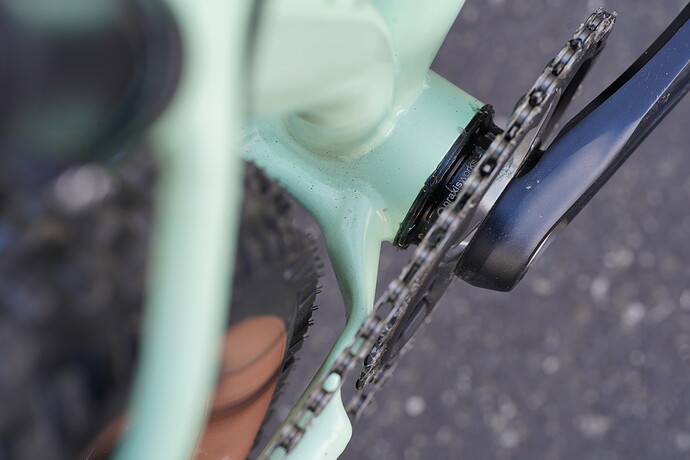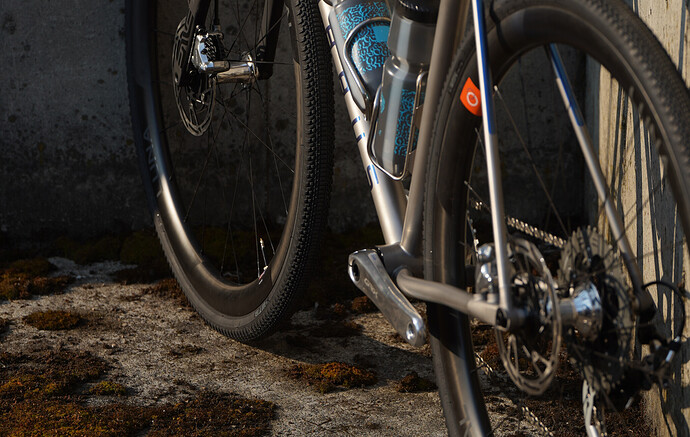Im building my second frame and it’s going to be a boost-spaced hardtail (first was fixed gear so nothing serious to worry about here). I want to use a bb47 bb shell but found out there’s more then one width of them (obviously it can’t all be simple). So is there one of the widths a more logical option over the others? excuse me if this has been asked/answered before but I just couldn’t find anything.
The spindle length on your crank arms would determine the ideal BB width. A wider BB would give you more real-estate to attach chain stays and would also require a longer spindle. You can use a longer spindle on a narrower BB shell by using spacers.
That makes sense, cant seem to find spindle length of the crank though. Ill search harder.
You can just use the same widths as for BSA, so for MTB that 73mm.
I love BB standards (sarcasm)
I wrote up some standards a while back:
Are you building a steel or titanium bike?
The first question to ask is, do you need a T47bb?
For a steel bike, these are the reasons to use T47:
- If you want to run the cable housings internally through the BB
- more space for 30mm spindles (this is mostly for fancy machined cranksets)
- If you find yourself using 38mm and larger downtubes (mountain bikes). Having a larger BB shell gives a better surface to weld/braze the downtube and seat tube to.
For a titanium bike most people have switched to T47:
- internal routing is way more common on titanium bikes (high end market)
- Titanium bikes use bigger tubes (>38mm).
If you answered “yes I want T47” the next question would be, internal or eternal bearings?
Internal (T47IB):
- internal is the “real standard”, supported by SRAM and Campagnolo
- For gravel bikes, it gives you a little more room to land the NDS chainstay. The DS chainstay is more limited by the chainring than the bb shell space
- it gives a bit more room for internal cable routing
External (T47EB):
- not an official standard according to SRAM (they do not make a DUB T47EB
- The BB cups are much easier to install and uninstall (bigger tool interface)
TLDR:
I would first establish your motivation for T47.
Pros:
- better match for >38mm downtubes
- room for internal cable routing
- better compatibility with 30mm spindles
Cons:
- It is heavier
- you need more tools
- It its easier to cross-thread.
- It does not help with DS CS clearance (the more difficult chainstay)
If you decide you want T47, framebuilders have more or less converged on:
- Gravel bikes: T47x85.5mm Internal Bearing
- Mountain bikes: T47x73mm External Bearing
If the bike is built correctly, the crank choice is independent of the bottom bracket standard. Just make sure you use the correct BB for road or mountain standards:
- Road External Bearing - 68mm
- Road Internal Bearing - 85.5mm (most common standard)
- MTB External Bearing - 73mm
- MTB External Bearing - 90.5-91.5mm (?) This is not an officially adopted standard
Wow! this is why I love this forum! Thanks for the detailed reply. The main reason I want the T47 is because it would give me more space for cables (dropper included) and the chainstays. also it will give me a bit more room to have the DT and seatstays be offset to give myself some more room to braze. As for the cons, Im not building a light bike per se, so that shouldn’t be too much of an issue. I don’t have any threading or facing tools as of now, so I would probably go to a better established friendly framebuilder in the area to ask them to help me out (looking at you @project12 ).
Ps, I guess this was a typo but im curious as to what
Eternal beearings would be? A bb you’d never have to change? sign me up!

